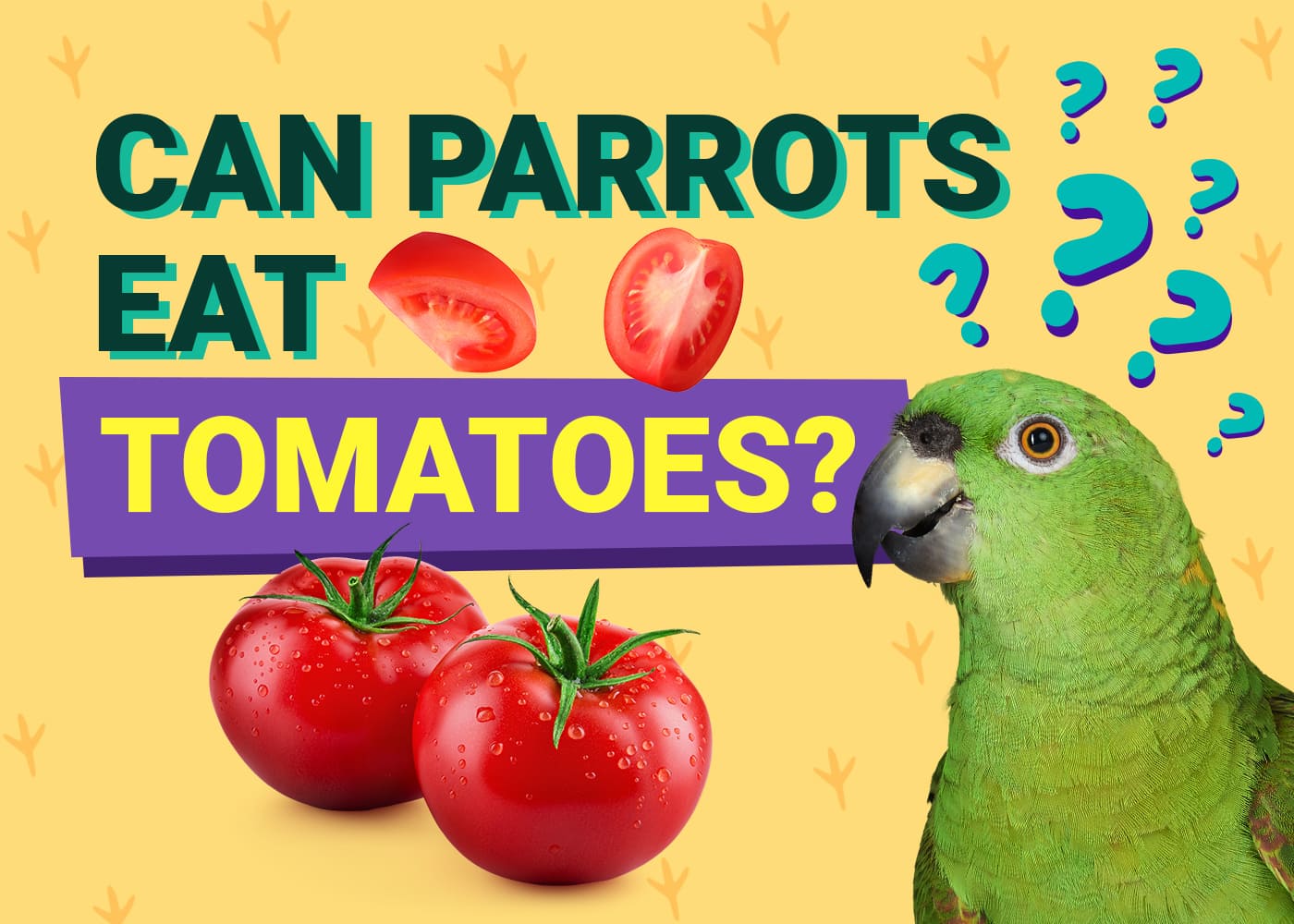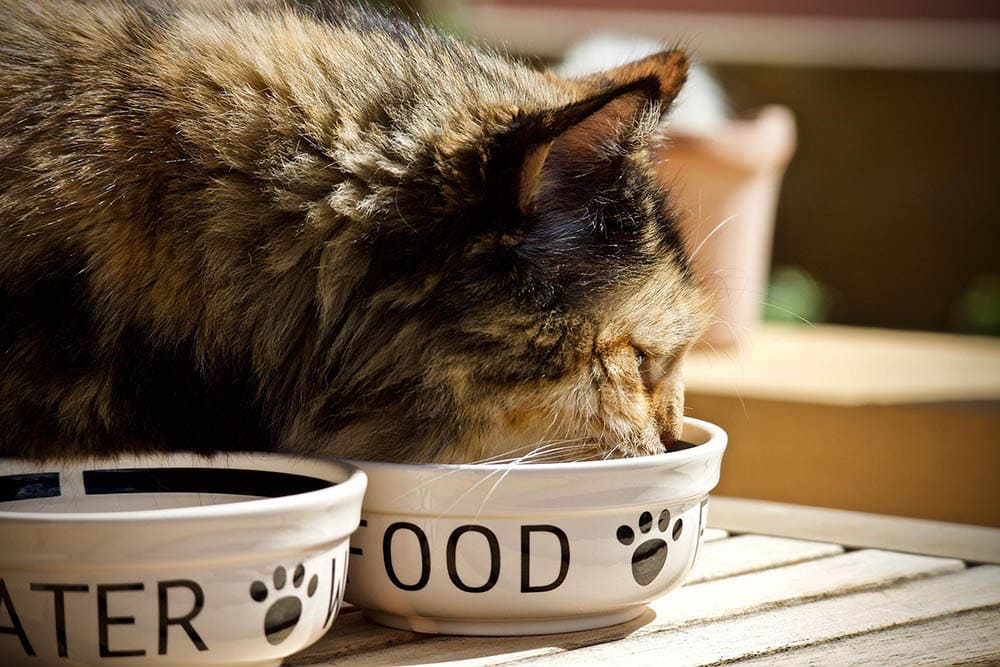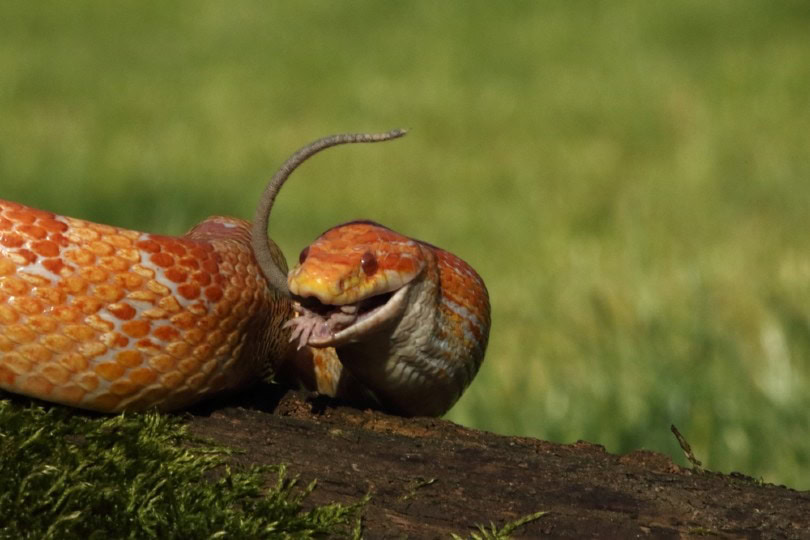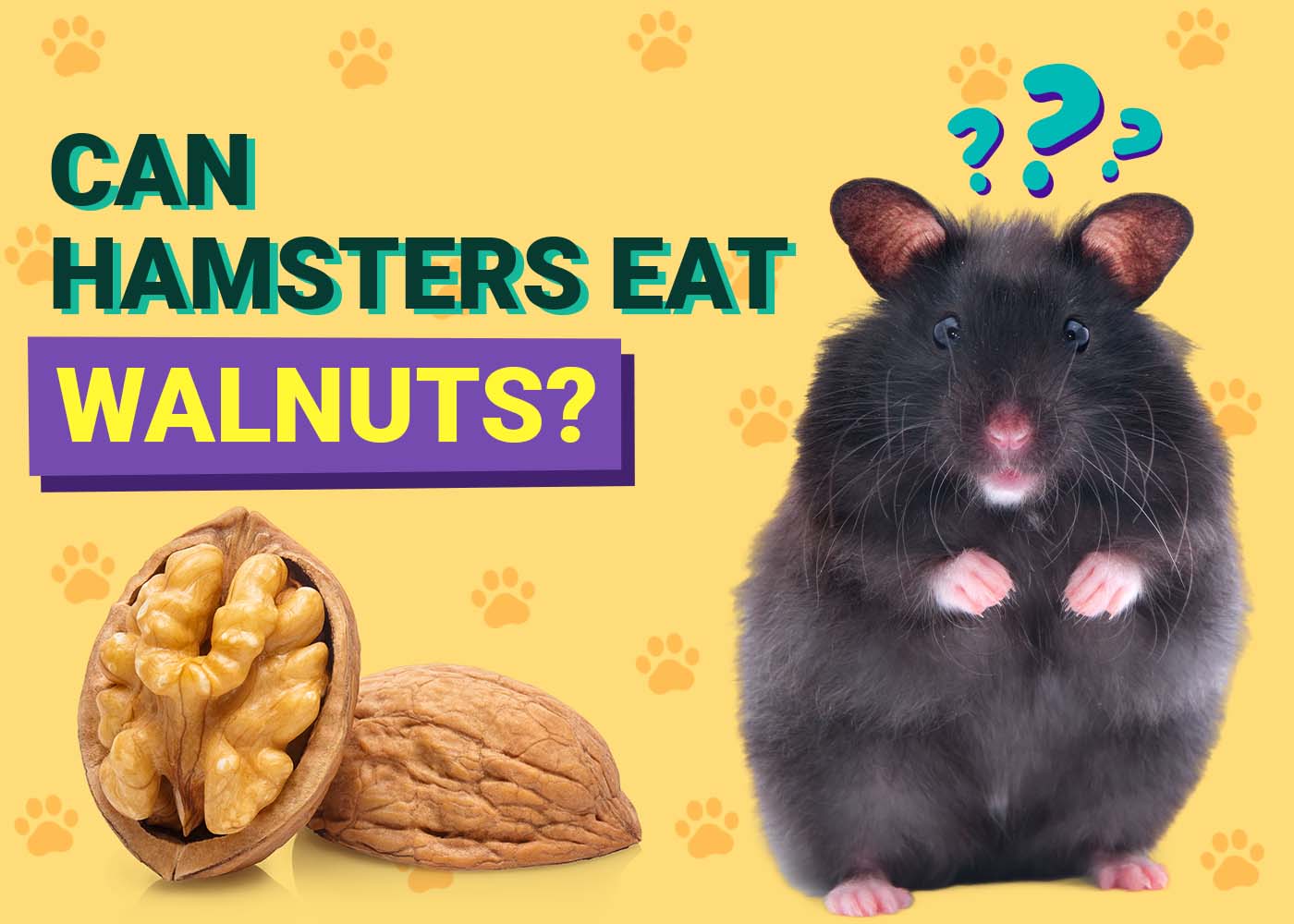VET APPROVED

The information is current and up-to-date in accordance with the latest veterinarian research.
Learn more »Click to Skip Ahead
If you have a pet parrot at home, you might’ve noticed that they often show a great interest in what you eat. This is especially true if you have a tame bird bonded with you. Since they consider themselves a member of your family (for them, their flock), they naturally assume they should eat with you.
Many pet owners want to add additional items to their parrots’ diet. Not only is this a great idea, but it’s very much recommended by vets worldwide, as a pellet diet cannot meet all their nutritional requirements. Tomatoes are a popular food that your parrot might show interest in. If you’re curious about adding tomatoes to your parrot’s diet, the good news is that ripe tomatoes are safe for parrots to eat. However, you shouldn’t offer them the leaves or stem of the plant.

Parrot Nutrition 101
The diet of pet parrots is impossible to replicate with that of their wild counterparts. This is in part because their wild counterparts have an exceptionally varied diet. In addition, depending on where you live with your parrot, some of the items they consume in the wild might not be available where you reside. Generations of breeding under human care may also desensitize parrots to the knowledge of all available wild dietary options.
Therefore, present-day veterinarian advice is to use a pellet as the bulk of their diet, which provides most of the nutrition they need. Such a diet should, however, be supplemented with vegetables, nuts, seeds, grains, and fruits on a daily basis to ensure your bird gets all the nutrients they need.
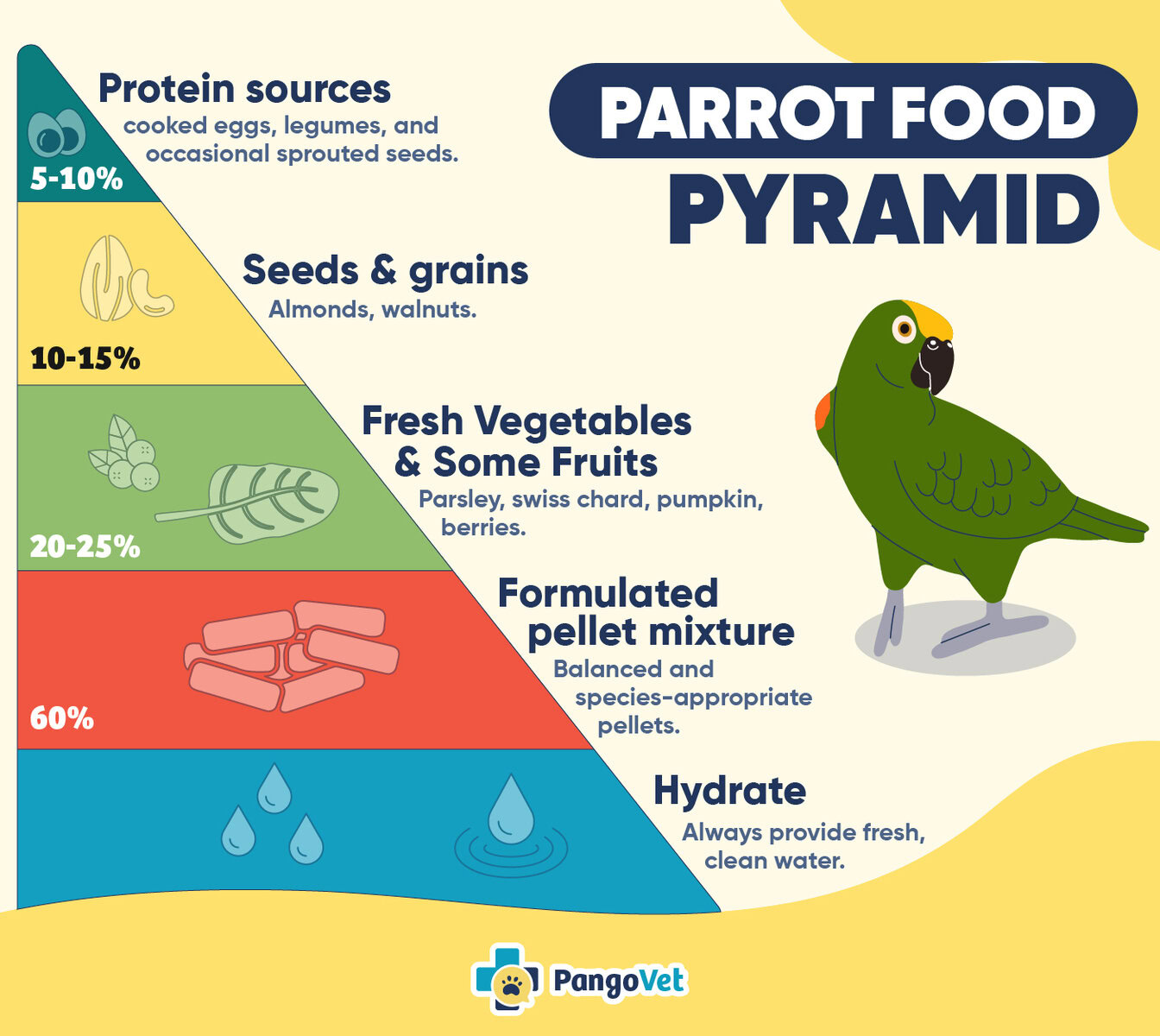
Tomatoes & Parrots
Most parrots readily eat tomatoes when they’re offered washed and sliced. If your parrot seems shy or confused about the tomato, there are several tricks you can try to get them to sample the food:
- Excitedly tapping a finger near the tomato is a great way to pique your parrot’s interest; this trick works incredibly well for parrots that are natural foragers (such as budgies and cockatiels).
- If your parrot is tame, try eating a tomato in front of them and then offering them a slice. Parrots are flock animals, and if they see a member of their flock (you) eating the tomato, they might be enticed to try some as well.
- Similarly, if you have multiple parrots, try feeding them together. If one samples the tomato, the others might quickly follow suit.
- Excitedly speaking to your parrot when offering them a piece of tomato might elicit a sense of wonder in them, and they may be tempted to try a bite.
Tomatoes should be offered sparingly, as they are (like most fruits) mainly composed of water and some carbohydrates (in the form of sugars). The skin and seeds of ripe tomatoes are safe for parrots to eat. Ensure that any tomatoes you feed your parrots are thoroughly washed and ripe.
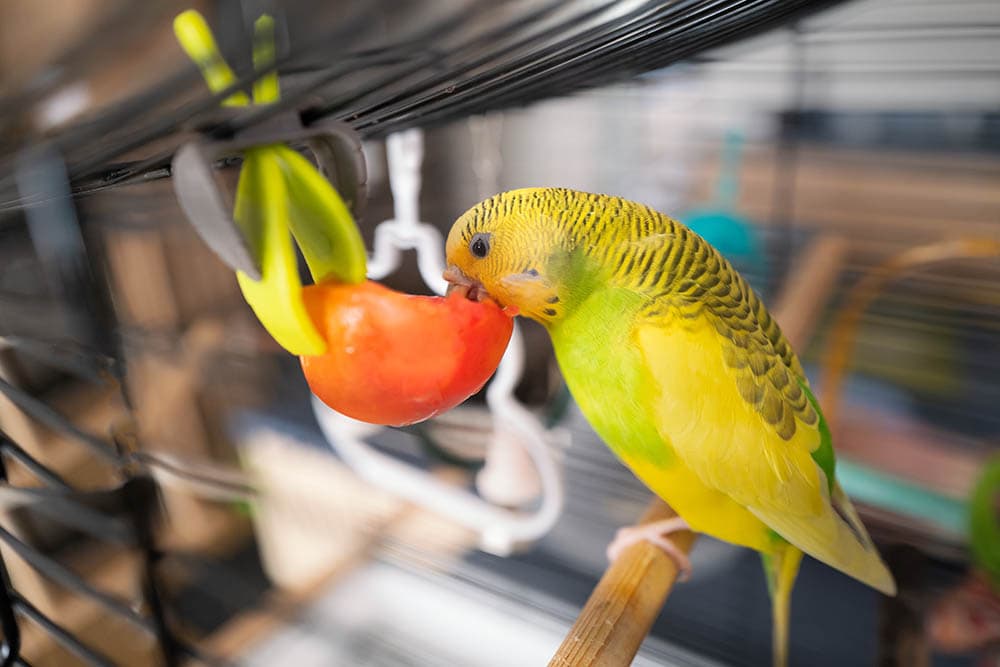
The Risks of Tomatoes
Though the tomato fruit is safe for parrots to eat, the stems and leaves of the plant are different stories. Parrots should not be allowed to eat either the stem or the leaves of a tomato plant since they are toxic because they contain solanine and tomatine. If you notice your parrot nibbling on the stems or leaves, you should immediately take them to your veterinarian for a checkup.
- Inappetance
- Lethargy
- Tremors
- Exceptionally watery diarrhea
- Ruffled feathers
- Depression
- General weakness
It is important to note that you should not wait for these signs to develop if your parrot consumes the stems or leaves of a tomato plant. Instead, immediately take them to the veterinarian for a checkup.
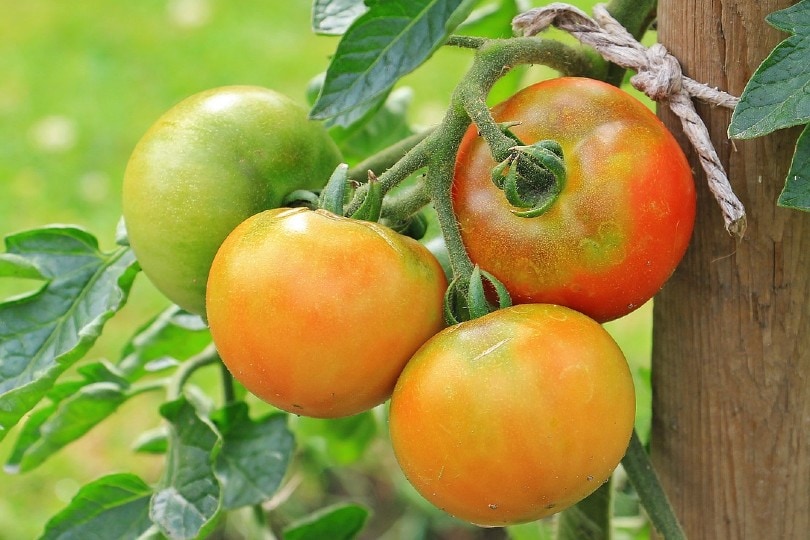
- See Also: Can Parrots Eat Bananas?

Conclusion
Ripe tomatoes are a safe and healthy addition to a parrot’s diet when served in moderation as part of their fruit quota. However, the leaves and stems of the tomato plant aren’t safe and should be kept out of their reach. If you suspect or observe your parrot eating the stem or leaves of a tomato, you should promptly seek veterinary care for them.
Next on your reading list:
Featured Image Credit: LoggaWiggler, Pixabay
